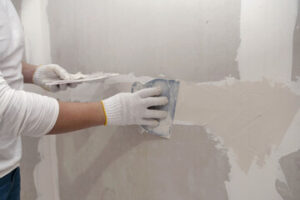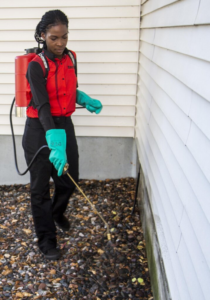Many homeowners don’t give their water heater much thought — until it doesn’t work. A broken one can throw your whole home’s schedule into disarray. Hot showers become a luxury, dirty dishes pile up and laundry may not get done.

Keep your water heater running smoothly by draining it at least once a year and installing thermostatic mixing valves. Also check the magnesium or aluminum anode rod regularly to prevent rusting. Contact Hot Water Heater Replacement Denver for professional help.
If family members are rushing to shower and wash their clothes in the morning only to be met with lukewarm or cold water, this is a clear sign that your hot water heater may not be big enough to meet demand. A professional should take a look at your system to determine how much hot water your household needs and install a new tank or on-demand model.
Another reason you might not have enough hot water is because your gas water heater’s pilot light has been extinguished. If this is the case, you will need to relight the pilot light by following the safety manual that came with your system. If you decide to do this, always turn off the gas supply to the water heater before trying to relight it. Doing this without the proper precautions can lead to explosions and fires.
If you’ve turned up the thermostat on your electric water heater and still don’t have enough hot water, it could be a simple fix. The problem might be as simple as a broken thermostat, or sediment build-up inside the tank that reduces the amount of hot water it can produce. If this is the case, your plumbing professional can flush out your system and reinstall the thermostat to get you back up and running.
Your plumbing system might also have a cross connection, where potable water comes into contact with non-potable water. If your water smells or looks discolored, this could be the cause. These types of issues are typically found in older systems and are best dealt with by a plumber near you.
If your electric or gas water heater is leaking, the first thing to do is to shut off the power and drain your system. This will help to prevent further damage and will give you the opportunity to see if there is a serious leak. After that, you will need to disconnect the water lines by turning off the valves to each one and attaching a hose to the drain valve on your hot water heater. You will need a pipe wrench or channel-lock pliers for compression or union fittings and a pipe cutter for soldered connections. Once your plumbing is disconnected, turn off the water to your hot water heater and open the drain valve. You will need to be prepared for a messy job, but this is the only way to get your hot water back.
Corrosion
Corrosion is the slow decomposition of metals and alloys due to reactions with their environment. The corrosive effect can be chemical or electrochemical and the degradation of a material may also include mechanical or structural damage. Metals that have been treated with corrosion inhibitors may be resistant to corrosion for a long period of time, but they can deteriorate due to other environmental factors.
The most common type of corrosion is rusting of iron, which is the formation of red iron oxide or iron hydroxide on the surface of metals such as steel and iron-based alloys. However, other metals corrode in similar ways. The corrosive effects of copper can include tarnishing, green copper oxide or yellow copper sulphide and the corrosion of aluminum can cause biogenic sulfide corrosion.
Another common form of corrosion is pitting, which occurs when a small hole forms in the surface of a metal, usually as a result of the de-passivation of an area of the metal. Pitting can be accelerated by a number of factors, including temperature, humidity and the presence of impurities such as silica.
Some metals, such as gold nuggets and alum, do not corrode on a geological time scale. However, most metals corrode because they interact with their environment in some way. The corrosive process can cause mechanical degradation and the loss of the metal from its original shape.
The corrosion of some metals can be beneficial, such as the green patina that covers and protects the bronze statue of the Statue of Liberty’s iron frame from weather damage. However, most corrosion is harmful and can lead to cracking or the complete failure of a metal structure.
Other causes of corrosion are leaking, galvanic corrosion and microbial corrosion. Leaks from a hot water heater are often the result of a corrosion problem and they can lead to extensive damage if not repaired promptly. If you notice puddles of water around your water heater, call us to schedule a service appointment. The leaking may be the result of a corroded tank or a leak in the tank seams or joints.
Dip Tube
When the dip tube breaks down or decomposes, it can severely impact the amount of hot water your heater produces. You may notice lukewarm or cold water temperatures in your home or find small plastic sediments clogging your faucets, which is a sign that the dip tube has failed and needs to be replaced.
The dip tube is a part of your water heater that separates the hot and cold water in your tank. It also helps to protect the anode rod from erosion by absorbing corrosion from it. A failure of the dip tube can result in a short supply of hot water in your home and a deterioration of the anode rod.
A common cause of a failing dip tube is chemical corrosion. Hard water, with its high mineral content, can hasten the degradation and breakage of a dip tube. The dip tube can also be broken or deteriorated by contact with hot water containing elevated levels of acidity or alkalinity.
Another problem that can occur with the dip tube is it getting hooked up to the wrong port on your water heater. This can happen when you have a professional plumber install your water heater. Fortunately, this can be corrected easily by re-hooking the dip tube to the correct port on your water heater.
Replacing a dip tube is not difficult for most homeowners, but it should only be attempted with a shutoff valve on the water heater and a pipe wrench to disconnect your cold water line. You will need to remove the nipple and connector of the inlet pipe and the old dip tube. Then you will need to replace the tube with a new one, connecting it with the cold water inlet, being careful not to drop any plastic debris into your tank.
Once you have completed the replacement, you will need to reconnect your cold water inlet and turn on your water heater. You will want to conduct temperature and pressure tests to ensure proper operation of the new dip tube. If your water heater is not operating properly, you should consult a licensed plumber or water heater technician to inspect and repair the unit.
Pressure Valve
The pressure valve is the device that allows water to escape a hot water heater if it becomes overheated. This is an important safety feature, but it can also cause problems. For instance, a pressure valve that is constantly leaking can put stress on the rest of your water system. This can eventually cause the water piping to leak. To avoid this, you should replace your water heater’s pressure valve if it has a constant leak.
You can replace a temperature and pressure relief valve yourself, but you will need to drain the tank first. You can do this with a garden hose attached to the drainage valve on the bottom of the tank. Once the hose is full of water, you can turn off the gas or electricity and cold water supply to the tank. Then, unscrew the valve with a wrench. Be sure to use a long handled wrench with a cheater, and wrap the valve threads with teflon tape.
While it is normal for the pressure valve to occasionally leak water, if it is leaking often or is leaking from the top of the unit, you will need to replace it. This is a simple job, but it should only be done by someone with experience working on hot water heaters. If the leak is serious enough, the tank itself could rupture.
You may notice that the discharge tube on a hot water heater is loose or rusty. This tube is designed to carry the excess pressure and temperature of a hot water heater away from the unit. It should be screwed into a threaded inlet on the top of a water heater tank. If it is loose, you can tighten it by screwing a new galvanized metal nipple onto the tube’s end. You will need to disconnect the water lines to the water heater using a pipe wrench or channel-lock pliers for compression fittings and a pipe cutter to disconnect water lines with soldered connections.
You can prevent this problem by installing an expansion tank to give the water pressure somewhere else to go besides the pressure valve. You should also periodically test your water heater’s pressure with a water pressure gauge and drain the tank to flush it out every year.








